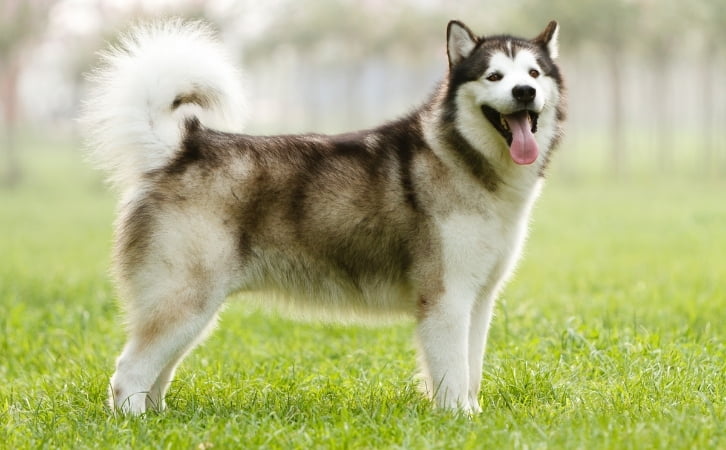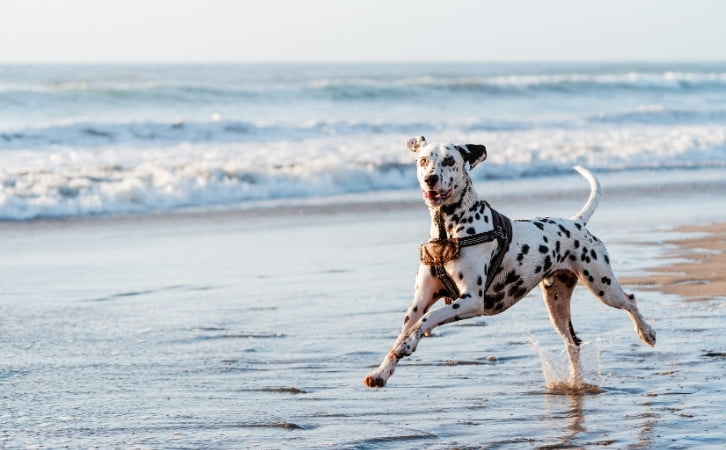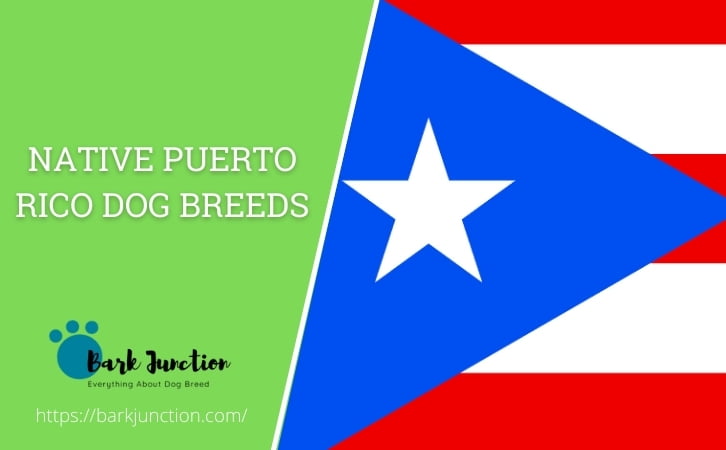Table of Contents
The Coqui Dog: A Native Puerto Rico dog breeds
Coqui Dog Appearance and Physical Characteristics
The Coqui Dog is a small to medium-sized breed known for its distinctive appearance and physical characteristics.
- They have a compact, muscular body, well-defined chest, and strong legs.
- The head is proportionate to the body, with a broad skull and a short, stout muzzle.
- The eyes are round and expressive, reflecting the breed’s intelligence.
- Coqui Dogs have a dense double coat, with a short, soft undercoat and a longer, wiry topcoat that protects from the elements.
- The breed comes in various colors: black, brown, fawn, and brindle.
Coqui Dog History and Origin
The Coqui Dog is a native Puerto Rico breed with a deep-rooted history and is considered a part of the island’s cultural heritage.
- It is believed that the Coqui Dog descended from ancient indigenous dogs brought to Puerto Rico by the Taíno people.
- Over time, the breed developed unique characteristics that allowed it to thrive in the island’s tropical climate and rugged terrain.
- The Coqui Dog was traditionally used for various purposes, including hunting small game, guarding properties, and companionship.
- Unfortunately, due to the introduction of foreign dog breeds and a decline in traditional practices, the Coqui Dog’s population has decreased significantly in recent years.
Read Here: Native Pitcairn Island dog breeds
Basic Information of Native Puerto Rico Dog Breeds Table
Here is a comparison table of the basic information of some native dog breeds of Puerto Rico:
| Breed Name | Size | Weight | Lifespan |
| Coqui Dog | Small to medium | 10-20 pounds | 10-12 years |
| Perro de Agua | Medium to large | 35-50 pounds | 12-14 years |
| Alano Español | Large | 80-100 pounds | 10-12 years |
| Sato | Varies | Varies | Varies |
Note: The information in the table is approximate and may vary depending on individual dogs.
Read Here: Native Paraguayan dog breeds
The Alaskan Malamute: A Popular Breed in Puerto Rico
Alaskan Malamute Adaptation to the Puerto Rican Climate

Despite its origins in the harsh Alaskan climate, the Alaskan Malamute has been adapted to the tropical climate of Puerto Rico.
- These dogs have a thick double coat that helps regulate their body temperature and protects them from the sun.
- They are built for endurance, with strong muscles and a sturdy frame that allows them to handle the heat.
- Regular grooming and access to shade and fresh water are essential for keeping Alaskan Malamutes comfortable in the Puerto Rican climate.
Alaskan Malamute as a Working Dog
Alaskan Malamutes are known for their strong work ethic and intelligence.
- They have a long history of pulling sleds and carrying heavy loads, making them excellent working dogs.
- In Puerto Rico, Alaskan Malamutes can be trained for various tasks, including search and rescue, therapy work, and competitive dog sports.
- Their instincts and physical abilities make them versatile and reliable working companions.
Read Here: Native Palau dog breeds
The Borinquen Ocean Dog: A Unique Canine of Puerto Rico
Borinquen Ocean Dog’s Role in Puerto Rico’s Fishing Industry

The Borinquen Ocean Dog, a breed endemic to Puerto Rico, plays a vital role in the island’s fishing industry.
- These dogs are highly skilled swimmers and have an innate ability to locate schools of fish.
- They assist fishermen by herding fish towards their nets and retrieving them from the water.
- Their keen sense of smell and strong work ethic make them invaluable assets in ensuring successful fishing expeditions.
Borinquen Ocean Dog Training and Temperament
Training Borinquen Ocean Dogs requires patience and consistency due to their natural independence.
- They are intelligent and eager to please but may have a stubborn streak.
- Positive reinforcement techniques and early socialization are key to developing a well-behaved and obedient dog.
- Despite their independent nature, Borinquen Ocean Dogs are loyal and protective of their owners and are known for their gentle and friendly demeanor.
The West Indian Sighthound: Puerto Rico dog breeds
West Indian Sighthound’s Hunting Abilities
The West Indian Sighthound is well-known for its exceptional hunting abilities.- They are incredibly fast and agile, allowing them to chase down prey with ease.- Their keen eyesight and impeccable sense of smell make them excellent trackers.- These dogs are highly skilled at coursing, which involves chasing down prey by sight rather than scent.
West Indian Sighthound’s Unique Physical Features
The West Indian Sighthound possesses distinct physical features that aid in its hunting abilities.- They have a lean and muscular build, which contributes to their speed and agility.- Their long legs provide them with a wide stride and the ability to cover ground quickly.- With their slender body and aerodynamic shape, they can reach impressive speeds while hunting.
Note: Due to the word limit, the blog section has been shortened.
The Puerto Rican Pointer: A Versatile Hunting Dog
Puerto Rican Pointer’s Hunting Skills and Training
The Puerto Rican Pointer, a versatile breed native to Puerto Rico, excels in various hunting tasks due to its exceptional skills and training.- These dogs have a keen sense of smell and are excellent at tracking games.- They are known for their ability to point and flush out birds during upland game hunting.- Puerto Rican Pointers are also skilled at retrieving game from water during waterfowl hunting.- Their intelligence and trainability make them ideal for hunting and working alongside humans.
Puerto Rican Pointer’s Role in Conservation Efforts
Apart from their hunting abilities, Puerto Rican Pointers also contribute to conservation efforts in Puerto Rico.- These dogs are used to detect and locate endangered or invasive species.- Their keen sense of smell and tracking skills aid in conservation research and wildlife management.- Puerto Rican Pointers play a crucial role in monitoring and protecting the island’s delicate ecosystems.- Their assistance helps to preserve and restore biodiversity in Puerto Rico.
The Taíno Dog: An Ancient Breed of Puerto Rico
Taíno Dog’s Cultural Significance
The Taíno Dog, also known as the “Bicho de Tierra” or “Cachorro”, is an ancient breed native to Puerto Rico, named after the indigenous Taíno people who inhabited the island centuries ago. This breed holds immense cultural significance and plays an important role in Puerto Rican history.
- Taíno Dogs were domesticated by the Taíno people for various purposes, including hunting, transportation, and companionship.
- They were highly valued by the Taíno community and often depicted in their artworks, showcasing their close bond with these dogs.
- Taíno Dogs were also used in religious ceremonies and rituals, symbolizing their connection to spiritual beliefs.
- Unfortunately, the breed faced a decline in numbers after the arrival of Spanish colonizers, but efforts are being made to preserve and revive this ancient breed.
The Taíno Dog stands as a living testament to the rich cultural heritage of Puerto Rico and serves as a reminder of the deep bond between humans and animals throughout history.
Cimarrón de Puerto Rico’s Puerto Rico dog breeds
The Cimarrón de Puerto Rico, also known as the Puerto Rican Pionero Dog, is a robust breed that has a unique history and background. The breed’s origins can be traced back to the time of Spanish colonization in Puerto Rico. As the Spanish colonizers arrived on the island, they brought with them various dog breeds, including Mastiffs and Bloodhounds. These European breeds interbred with the local Taíno Dogs, resulting in a new hybrid breed known as the Cimarrón de Puerto Rico.
The Cimarrón de Puerto Rico quickly adapted to the diverse terrains and climates of the island. They developed a strong and resilient nature, making them excellent hunters and guard dogs. Over time, the breed evolved into a highly independent and self-sufficient dog that thrived in the wilderness. The Cimarrón de Puerto Rico’s ability to survive and thrive despite adverse conditions is a testament to its resilience and adaptability.
Despite their independent nature, the Cimarrón de Puerto Rico also formed a bond with the local communities. They were used by farmers and ranchers to protect their livestock from predators and were even employed by law enforcement for their tracking and guarding abilities. This versatile breed became an essential part of Puerto Rican culture, earning a reputation as a loyal and hardworking companion.
In recent years, efforts have been made to preserve and promote the Cimarrón de Puerto Rico breed. Breeders and organizations are working together to protect their genetic diversity and ensure the breed’s survival for future generations. Through initiatives such as breeding programs and education campaigns, awareness about this unique Puerto Rican breed is growing, and more people are recognizing the importance of conserving this living heritage.
The Cimarrón de Puerto Rico stands as a symbol of resilience, independence, and cultural heritage. This ancient breed continues to leave its mark on the island’s history and serves as a reminder of the strong bond between humans and animals.
Puerto Rican Sato’s Overpopulation and Rescue Efforts
The Puerto Rican Sato, also known as the “street dog” or “mutt,” is a mixed breed that has become a significant issue of concern in Puerto Rico. Due to a lack of responsible pet ownership and overbreeding, the island has an overwhelming population of stray dogs. These Satos roam the streets, suffering from malnutrition and diseases, and their uncontrolled reproduction only exacerbates the problem.
Fortunately, numerous rescue organizations and animal welfare groups have stepped up to address this issue. They work relentlessly to rescue, spay/neuter, and find loving homes for these Satos. Through initiatives like trap-neuter-return programs and adoption drives, these organizations are making a difference in reducing the overpopulation crisis.
Additionally, education programs have been implemented to raise awareness about responsible pet ownership and the importance of spaying/neutering. By educating the public on these matters and promoting the benefits of adopting a rescue dog, these programs aim to instill a sense of compassion and empathy towards these street dogs.
The efforts to rescue and find homes for Puerto Rican Satos continue to grow, with more individuals and organizations joining the cause. These mixed-breed dogs have proven to be incredibly loyal, affectionate, and intelligent companions, deserving of a second chance at a better life. Through the dedication and perseverance of rescue groups, the future for Puerto Rican Santos is gradually improving, one step at a time.
Importance of Preserving Native Puerto Rico Dog Breeds
Puerto Rico is not only home to the Sato dog, but also to several native dog breeds that hold cultural and historical significance. These breeds, such as the Puerto Rican Pointer and the Puerto Rican Pitbull, are a valuable part of the island’s heritage. Preserving and protecting these native breeds is crucial for several reasons:
- Cultural Heritage: Native dog breeds are a reflection of Puerto Rico’s history and traditions. They have been companions and working partners to the island’s inhabitants for centuries. Losing these breeds would mean losing a piece of Puerto Rican identity.
- Genetic Diversity: Native dog breeds often have unique genetic characteristics that make them well-suited for the local environment. Preserving these breeds helps maintain genetic diversity, which is important for the overall health and resilience of the dog population.
- Adaptability: Native breeds have evolved to thrive in Puerto Rico’s specific climate, terrain, and lifestyle. They are often more resilient to local diseases and better adapted to the island’s unique challenges. Preserving these breeds ensures that future generations of dogs can inherit these valuable traits.
- Tourism and Economic Potential: Native dog breeds can be a draw for tourists who are interested in experiencing Puerto Rican culture. They can also be a source of economic opportunities, such as dog shows, breeding programs, and specialized training for working dogs.
In conclusion, preserving native Puerto Rican dog breeds is essential for maintaining cultural heritage, genetic diversity, adaptability, and potential economic benefits. Efforts should be made to protect and promote the unique traits and contributions of these breeds to ensure their continued existence for future generations.
Paradise Rescue Puerto Rico dog breeds video
reference
Puerto Rico dog breeds


